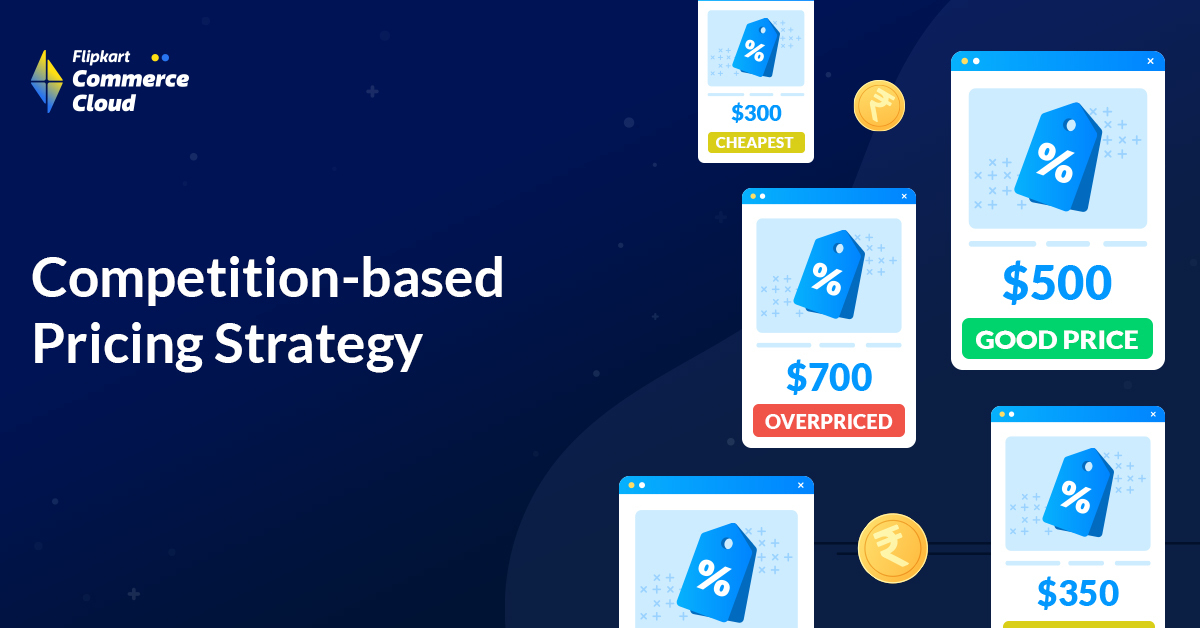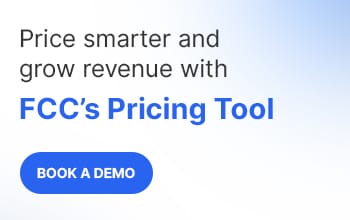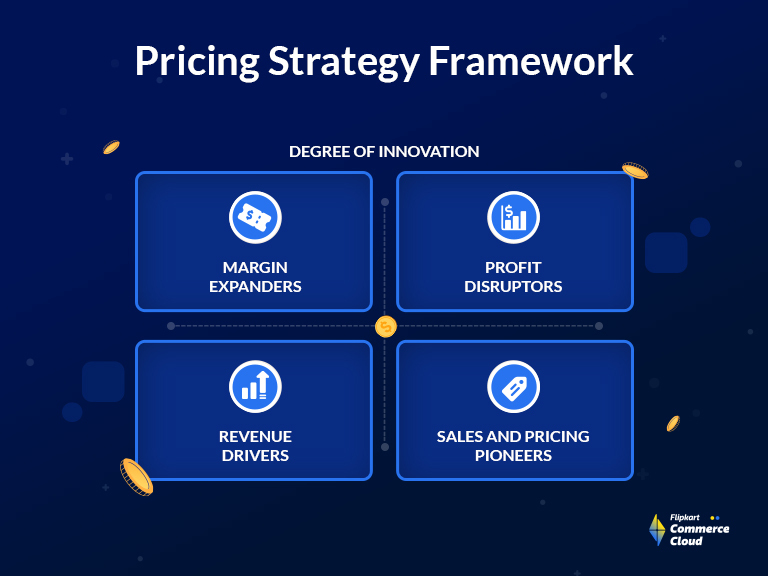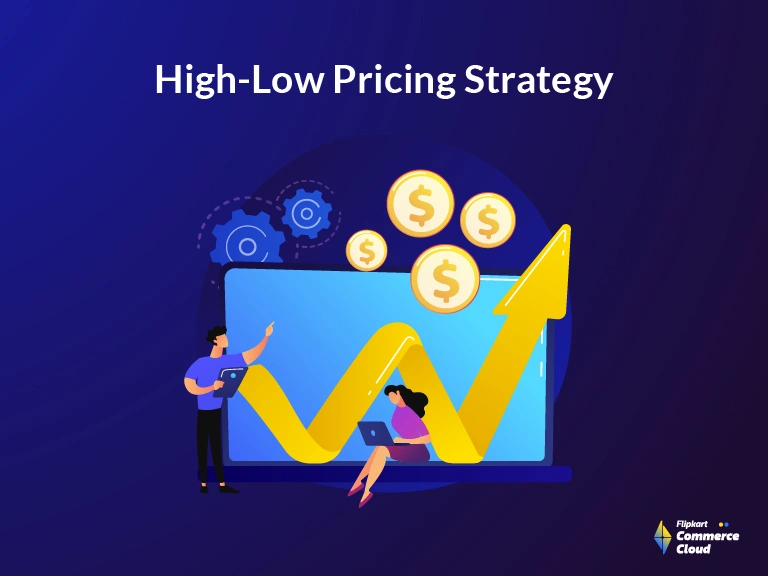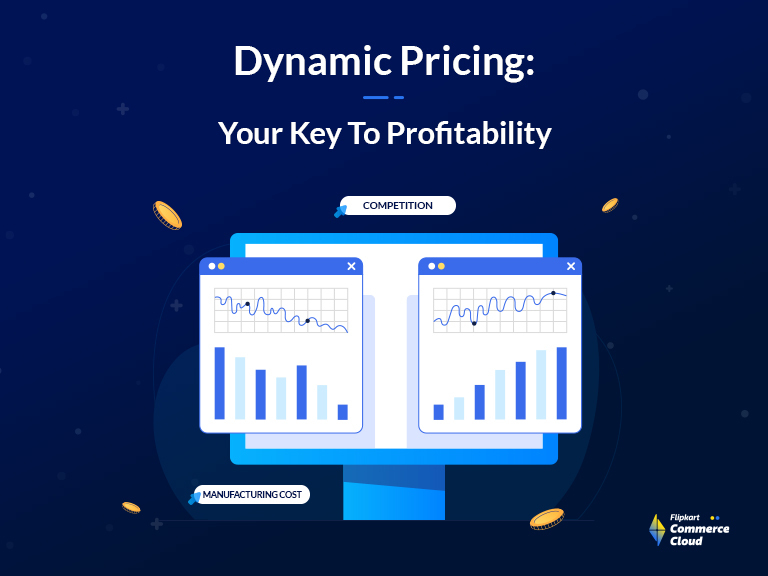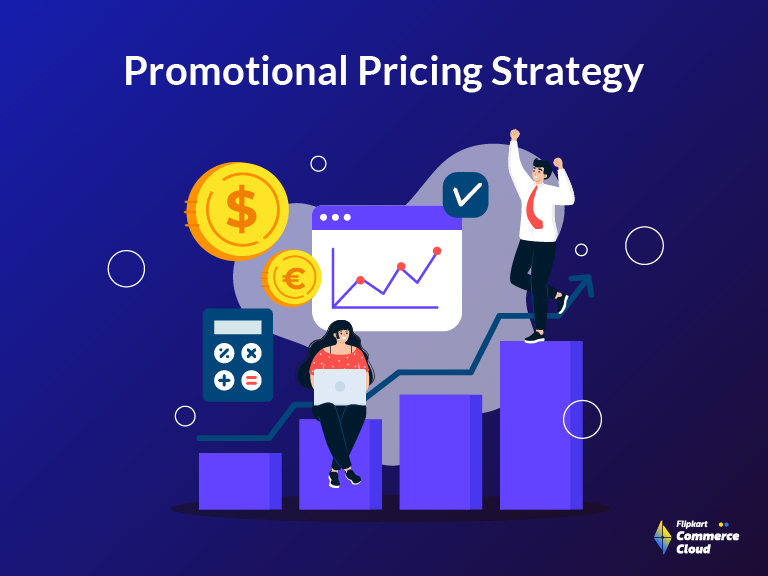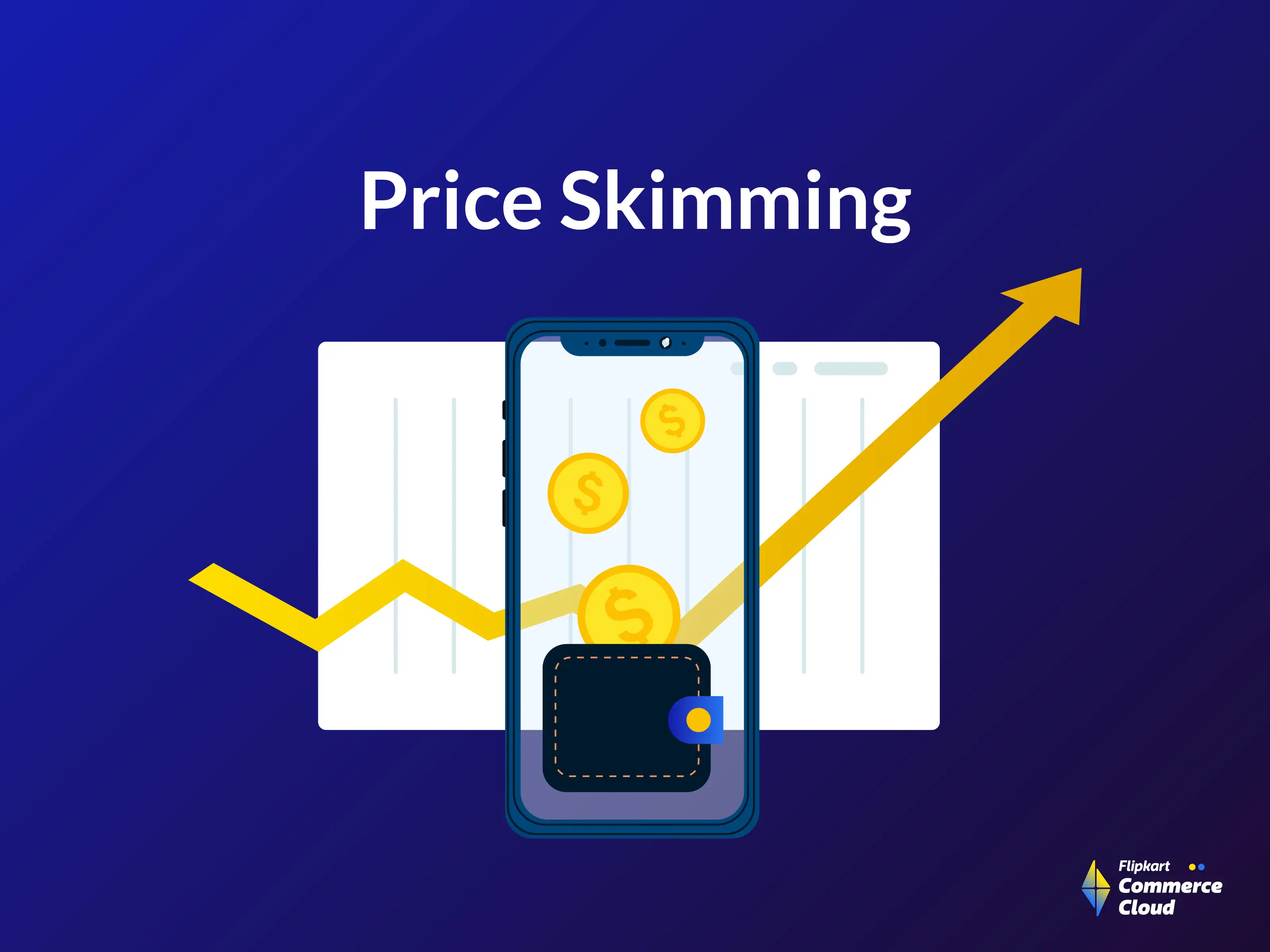In today’s era of booming E-commerce sales and effortless comparison shopping, competition in the market has reached new heights. Customers are now more vigilant about prices. Whether they opt for the cheapest or most expensive product, their decision to purchase must be justified – either by fitting within their budget or offering superior features.
That’s why companies use strategically thought-out processes for setting up their product pricing. In addition to looking at pricing factors like production costs and price sensitivities, businesses often closely monitor competitors’ pricing strategies while setting prices.
Using a competition-based pricing strategy ensures businesses have a competitive edge in the market against their rivals. In this blog, we discuss in detail the intricacies of competitive pricing. Read on!
What is competitive pricing?
Competitive pricing is a strategy where a company sets the price of its products based on what the competition is charging. It’s a common practice in industries where the sales volume is high, and price plays a significant role in the consumer’s decision-making process— for example, the retail sector, especially when selling online.
The core concept underlying competitive pricing revolves around capturing a notable portion of the market by either presenting products at a lower cost than rivals or by delivering enhanced value for a similar or slightly elevated price point. However, the objective is not just to gain market share but to do so in a manner that allows the company to remain profitable.
While setting up a competitive pricing strategy, businesses usually have three choices:
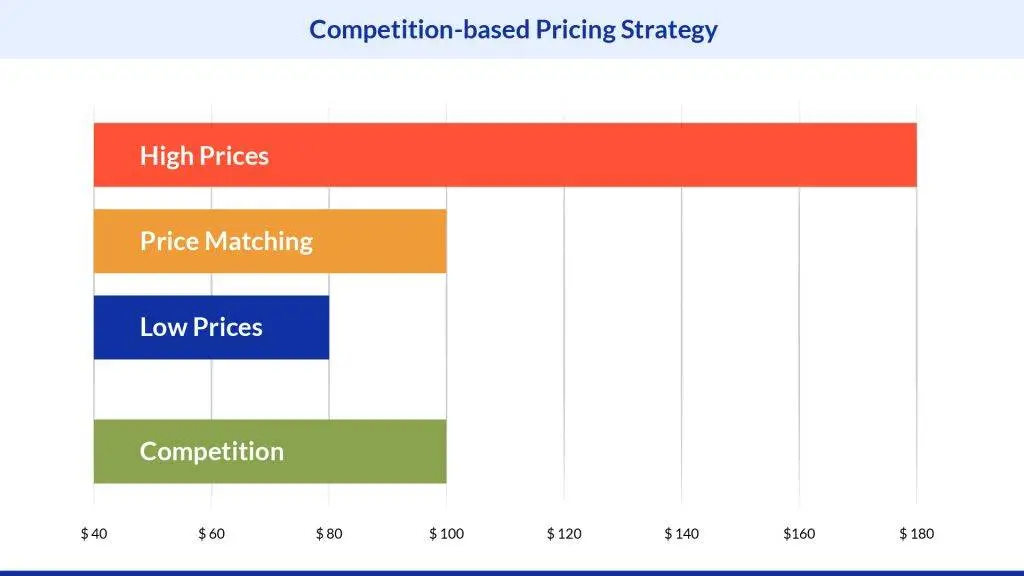
- Offer a lower price than competitors: This approach works well for companies that can capitalize on economies of scale. The lower pricing is achieved by reducing production costs, negotiating better deals with suppliers, or streamlining internal processes to improve efficiency. Lower price point can also be used as a part of a loss leader strategy, where companies offer an irresistible product at an incredibly low price to attract potential customers. This strategy acts as a warm invitation, enticing people to explore what else is on offer, ultimately leading to more sales in the long run. Other strategies, such as penetration and predatory pricing, also involve looking at competitor pricing.
- Offer a higher price than competitors: This is mostly used by businesses that can justify the higher cost of the product. They do so by providing higher quality or better benefits to their customers. Most “premium” and “luxury” retail brands fall into this category. Price skimming strategy, where businesses initially launch a product at a higher price and then gradually decrease it over time as competition increases, uses competitive analysis to decide the pricing.
- Offer a similar price to competitors: This strategy involves keeping the price in line with competitors. It’s often used when there is little room for differentiation between products or when the market is highly price-sensitive. While matching the price might not provide a significant competitive advantage, it helps prevent the perception of a product being overpriced, which can deter potential customers.
Setting a winning competition-based pricing demands real-time analysis of the market, a deep understanding of your target audience, and accurate competitive intelligence.
Competitive pricing examples
Let’s delve into a few examples to understand competitive pricing strategy better.
Amazon Vs. Walmart
In the retail industry, Amazon and Walmart are two giants locked in a fierce battle for dominance. With their vast resources and extensive customer bases, both companies employ aggressive pricing strategies to undercut their competitors and attract more customers.
Walmart, known for its ‘Everyday Low Prices,’ has built its reputation on offering affordable products to consumers. By leveraging its massive buying power, Walmart negotiates with suppliers to secure the best possible prices, allowing them to pass on the savings to their customers. This pricing strategy has been instrumental in Walmart’s success, as it appeals to budget-conscious shoppers looking for the best deals.
On the other hand, Amazon has revolutionized the retail industry with its online marketplace and fast delivery services. With an extensive network of third-party sellers and its own inventory, Amazon often offers lower prices on items compared to traditional brick-and-mortar stores. By constantly monitoring market trends and adjusting prices dynamically, Amazon provides customers with the most competitive prices possible.
Both Amazon and Walmart understand the importance of competitive pricing in attracting and retaining customers. However, their approaches differ slightly. While Walmart focuses on everyday low prices, Amazon’s strategy involves using dynamic pricing, where it constantly adjusts prices based on demands, competition, and other factors.
Apple iPhone Vs. Samsung Galaxy S23
Apple, renowned for its sleek designs and cutting-edge technology, presents the iPhone 14 Pro Max priced at $1,099. This premium choice caters to customers who value prestige and advanced features synonymous with the Apple brand.
On the other side of the ring, we have Samsung’s Galaxy S23 Plus priced at $999. Samsung targets customers who crave top-notch performance and innovation without breaking the bank. By offering a slightly lower price than iPhone, Samsung aims to attract savvy shoppers looking for a powerful device at a more accessible cost.
In this pricing face-off, Apple embraces its reputation for luxury and high-quality technology by offering a higher price point. Samsung takes a strategic approach by providing a competitive price to capture a broader market segment.
Netflix Vs. Hulu
Another great example of using competitive pricing to win market share is streaming service providers such as Netflix and Hulu.
Netflix, the undisputed streaming king, offers a variety of plans to cater to all types of viewers. Their basic subscription starts at just $8.99 per month. The standard monthly subscription is $13.99 per month and includes HD streaming on two devices simultaneously. At $17.99 per month, the premium plan provides the highest quality video and audio, allowing streaming on four devices simultaneously.
Hulu aspires to be a cost-effective choice, with rates starting at $5.99 per month. Hulu Plus has an ad-free plan for $11.99 per month. The Hulu + Live TV plan starts at $64.99 for people who want a mix of live TV channels and on-demand content.
In the battle of the streaming services, Netflix and Hulu are going head to head. Netflix highlights its large content catalog and various plan options, allowing users to choose what works best. On the contrary, Hulu stands out with its lower-cost plans and live TV option, appealing to budget-conscious consumers and those who want a mix of traditional and on-demand content.
Now that we’ve covered the examples of competitive pricing strategies let’s delve into the advantages of adopting a competitive pricing strategy for your business.
Advantages of competitive pricing strategy
There are several ways in which adopting a competitive pricing strategy can help your business grow. The most important ones are:
Accurate to predict when combined with ML technology
Employing advanced Machine Learning (ML) technology gives competitive pricing strategies a significant edge. ML Algorithms can sift through mountains of historical and real-time data to gain insights into customer preferences, market developments, and competitor strategies.
These findings allow businesses to make data-backed pricing decisions that align perfectly with the dynamic market landscape and business goals.
Prevent market share loss and boost revenue
Implementing a competitive pricing strategy forces you to stay in tune with the market dynamics and customer preferences. Instead of setting prices arbitrarily, you need to analyze the market trends, competitor pricing, and customer demand to determine the optimal price points for your products or services. By offering competitive prices, you incentivize customers to choose your products or services over your competitors.
Additionally, when implemented with pricing software that can capture competitor data in real time, you can swiftly assess and respond to the pricing adjustments of your competitors. The dynamic approach acts as a shield against potential market share erosion.
Set stage for dynamic pricing strategy
Implementing a competitive pricing strategy forces you to stay in tune with the market dynamics and customer preferences. In a sense, it is the first step to setting up a dynamic pricing strategy. With a dynamic pricing solution, businesses can optimize profitability by automatically adjusting pricing based on factors like raw material costs, market demand, seasonality, inventory levels, and freight costs.
These solutions also offer insights into pricing trends across similar products in your market and fluctuations in demand. The pricing approach becomes even more crucial in E-commerce retail, where buyers extensively research and compare products before making a decision.
Challenges in adopting competitive pricing analysis
While competitive pricing strategies can be great, it’s not all sunshine and rainbows. Some tricky challenges businesses face while setting it up are:
1. Finding like-for-like products to compare pricing
Businesses often struggle to identify comparable products when undertaking competitive pricing analysis, which means finding products with comparable features, qualities, and customer value. But that’s not all; your target audience must also match. Without this alignment, the analysis could produce inaccurate results, leading to ineffective pricing strategies.
How to tackle it: Attribute mapping and careful product categorization are crucial for overcoming this obstacle. Learn everything there is to know about your product and what makes it unique, then look for similar features in competitors before making a pricing decision.
2. Error in pricing comparison due to insufficient data points
Competitive pricing analysis is no joke, especially when dealing with many products and competitors. Typically, data collecting is a time-consuming and error-prone process. Also, insufficient data might skew price analysis accuracy, leading to wrong conclusions.
If you confine yourself to a small sample of data, you miss important market movements. And drawing conclusions based on this is downright risky since it doesn’t consider customer preferences and the ever-evolving market trends, especially in retail, where the selling price of products changes on a daily basis.
How to tackle it: Elevate your data-gathering efforts by tapping into online platforms, market research, and consumer surveys. This multifaceted strategy provides a comprehensive dataset, giving you a better and more accurate picture of the market situation.
Additionally, advanced pricing software like Flipkart Commerce Cloud can help. Our Competitive Intelligence Platform gives you the flexibility to track your competitive landscape by category, brands, or any other breakdown that suits your needs and lets you effortlessly track price fluctuations of millions of rival products in real time.
3. Missed opportunities if implemented in silos
Two surefire ways to get to competitive pricing hell: working in isolation and copying competitor prices. Simply mirroring your competition’s pricing strategy devalues your products’ unique value proposition, cost structure, and customer perception. You risk overlooking critical data points vital to develop a well-informed and successful pricing plan that strategically puts your product on the market.
When the pricing is based only on the competitor’s price point and does not consider the product’s USP or market demands, it often leads to pricing wars among companies.
How to tackle it: Diversify your approach to present a well-rounded data analysis. Think about product distinction, perceived value, and customer feedback in addition to the price strategies of direct competitors. Use pricing analysis tools and techniques like competitive pricing analysis, price elasticity analysis and value based pricing analysis to gather intelligence about your competitors.
Additional Read: 16 Retail Pricing Strategies For Increased Sales in 2024
4. Short-term thinking
It’s essential to avoid the mistake of short-sighted thinking. Numerous businesses experience financial loss by adopting a “set and forget” strategy. In today’s constantly changing retail landscape, prices often vary on a daily basis across multiple online and in-store platforms. Companies that don’t use advanced pricing software tend to set prices and leave them unchanged for extended periods, ignoring the subtle changes in market demand, competitive activity, and customer behavior.
How to tackle it: Keep track of market sentiment and demand fluctuations and make changes in real-time. Using pricing software like FCC can help you automate competitive benchmarking while providing insightful data on market gaps you can tap into.
5. Not considering all sale channels your competitors are using
Ignoring pricing variances across multiple sales channels might result in ineffective pricing strategies. Prices might vary dramatically between competitors’ online, offline, and other distribution channels. Overlooking these differences can lead to ineffective pricing methods.
How to tackle it: Perform an in-depth, multi-channel analysis to examine competitor prices across various sales channels. Gain a comprehensive understanding of their pricing strategy and adjust your approach accordingly.
How to build a competition-based pricing strategy?
Analyzing your competition and using the information to set up your pricing strategy can give you the head start over your target audience. Here are the things to look at as you set up your own competitive pricing strategy:
1. Know your cost and margins
Setting competitive prices starts with understanding your production costs and margins. It covers direct costs like materials and manufacturing and indirect expenses like overhead and marketing.
Make sure you are keeping a good profit margin while evaluating your product pricing; it allows you to reinvest in your company while covering all your costs. Also consider competitor prices and customers’ willingness to pay when developing the pricing strategy.
2. Identify your competitors in the market
Do thorough research to identify and analyze the key competitors in your market. Understand their strengths, weaknesses, product offerings, and customer base. Consider both direct competitors – offering similar products, and indirect competitors – offering different products but fulfilling the same consumer need.
Discover valuable insights about competitors’ prices, features, benefits, and weaknesses by leveraging price comparison websites, online reviews, and customer surveys. But that’s not all – it’s equally important to delve into your customers’ preferences, needs, motivations, and pain points that drive their buying decisions. Dive deep, segment your customer base and identify their price sensitivity and elasticity using tools like customer feedback, loyalty programs or analytics.
3. Identify their pricing & positioning strategies
The next step is discovering the secret behind your competitors’ pricing strategies. Do they promote themselves as high-end brands that charge premium prices? Or do they provide discounts to entice budget-conscious buyers? Study their value propositions and customer communication to gain insights into their market positioning.
4. Set a pricing strategy
Once you have a clear understanding of your competitors’ pricing strategies, it’s time to consider your own costs and desired profit margins. Calculate your production costs, including raw materials, labor, overhead expenses, and any other relevant factors. Determine the profit margin you want to achieve and factor it into your pricing equation. Also, don’t forget to automate your competition-based pricing and make it a part of your dynamic pricing strategy.
5. Monitor and adjust your pricing strategy
Track your prices based on market fluctuations, customer feedback, competitors prices and the performance of your business. Modify prices regularly in response to fluctuations in demand, supply costs, competition, and seasons. But avoid frequent and erratic pricing adjustments as they may confuse or alienate your customers. Keep tabs on revenue, margin, conversion, retention, and customer satisfaction to gauge the success of your pricing approach.
Use Pricing Manager by Flipkart Commerce Cloud to craft optimal pricing
If you want to implement a successful competitive pricing strategy, you need to have a way to quickly collect, analyze, and report data from your competitors and niche markets. Instead of manually reviewing market fluctuations and adjusting your prices occasionally, consider utilizing advanced pricing solution like FCC’s Pricing Manager.
Through our Price Optimizer, Competitive Intelligence, and Dynamic Pricing Platform, we offer an end-to-end solution for online retail omnichannel brands seeking to make strategic pricing decisions.
Powered with state-of-the-art, built-in machine learning algorithm FCC’s pricing manager provides:
-
- Granular customer segmentation with cluster analysis: Analyze related data points representing customer characteristics & behavior patterns and determine customer persona groups with high accuracy.
- Competitor and attribute-based pricing: Consider how N variables are affecting the pricing of M items. Get 360 degree market view with historical and real-time data on competition, external and internal factors
- KPI-driven pricing: Align your pricing recommendation with your business KPIs such as Margin, turnover, profit maximization, inventory optimizations.
- Price elasticity calculation: Define price elasticity to predict whether the price will be accepted and stimulate output based on business scenarios to optimize strategy
- Real-time Price Updates: FCC facilitates real-time price adjustments in response to evolving market conditions, ensuring accurate product pricing at all times.
- Customizable Pricing Rules: Businesses can shape their pricing strategy with FCC’s customizable pricing rules, enhancing control over pricing dynamics.
- Insightful Reporting and Analytics: FCC equips businesses with insightful reports and analytics, enabling them to assess pricing performance and make strategic refinements.
By automating pricing decisions, Flipkart Commerce Cloud empowers businesses to make better choices and maximize profits.
Need help with your retail pricing strategy? Talk to our experts today.
